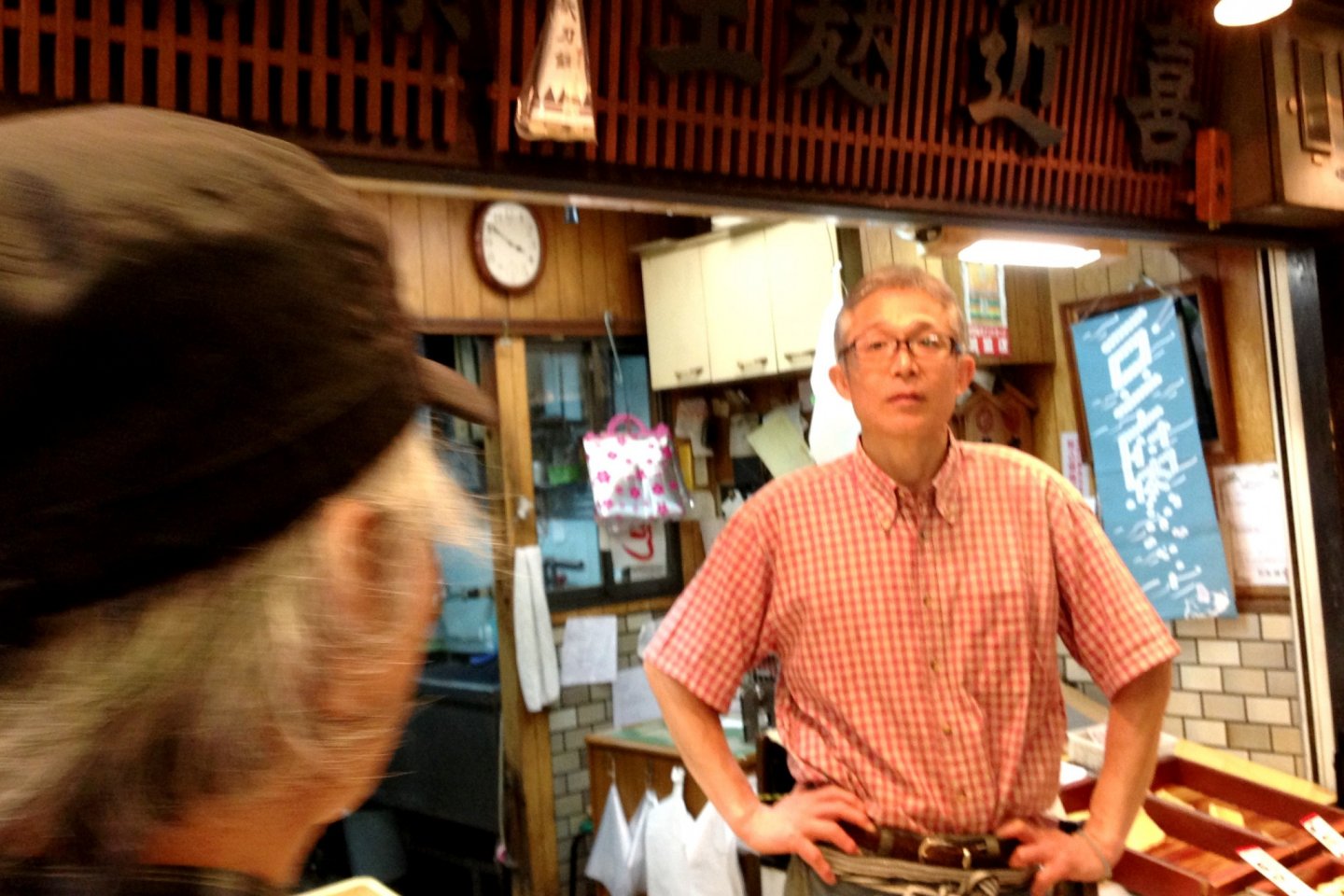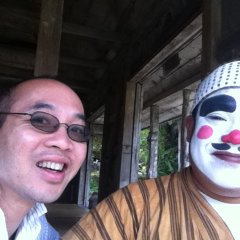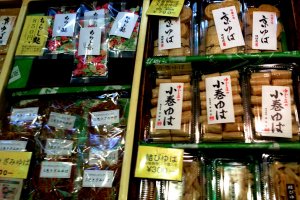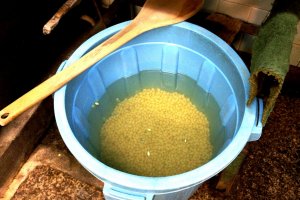If Nishiki Market is the kitchen of Kyoto, then Kyoganmo (京がんも・京生麩・京湯葉) is the kitchen of Nishiki, literally. Massive worn stainless steel pots, so big that you can practically sail away in, line the sky blue tiled kitchen just inches away from the market stalls and the camera snapping tourists.
The current owner is the fourth generation tofu maker at this no frills kitchen, having been in the same family for over one hundred years. His weathered face has seen the comings and goings at this market, and it seems that nothing fazes him. Disasters and things that go wrong in the kitchen, he has seen it all.
Today I had the fortune of a private lesson in how to make tofu, which is a real labor of love. Early each morning, as he has done for so many decades, he lovingly soaks and drains the soy beans in these huge metal pots, like he is cooking a big family banquet. He also has these massive metal grinders to blend the soya beans, which like him is like a well-oiled machine. Taste wise, it is really important to have best quality water to blend these beans, and fortunately the spring water in Kyoto is both pure and abundant. After heating this mixture, you need to carefully drain the soy milk, itself having an amazing taste being so fresh. You can see the massive wooden lids and presses that are reminiscent of those seen in some ukiyo-e woodblock prints, some of which portray the same stalls in Nishiki Market that you see today.
By making tofu from scratch instead of using pre made soy milk gives it a creamier, nuttier taste. It also allows him to serve all its by products that you can see at the stall. Yuba, loosely translated as tofu skin created during the heating process, is a Kyoto delicacy, known as kyo-yuba. The Musubi yuba (tied tofu skin) and Kyo Yuba are sold in plain transparent packaging from 350 yen. Its accessibility today is a far cry from the Edo period a few hundred years ago, when its labor intensive nature meant that it was a luxury item reserved for the Shogun during special occasions. In the Meiji period more than a hundred years ago, they included the use of American soy beans bought after Commodore Perry, and this American influence can be seen both in the ingredients and the ways soya beans are used. Just go down to stall 50, the Kyoto Tofu Fujino’s Konnamonja shop on the same street and try some amazingly light and healthy soya milk donuts. Who said donuts can’t be healthy? Now you can have your cake and eat it.

































